After a short drive from Masevaux, we arrived at the Écomusée d'Alsace. The écomusée is a large outdoor museum that they have set up like a town to show how Alsatians lived in the 19th and early 20th century. All of the buildings were actually used at some point and as they were no longer needed, they were given to the museum to house their collection and set up the town.
We figured we would need most of the day for perusing and we got there at 11 am. The map they gave us was quite large and the list of different demonstrations going on throughout the day was also quite extensive.
We headed straight away for the stork feeding, but had missed it by a few minutes. We did catch the tail end of some interesting facts. Storks usually migrate at the end of August, sometime after the 15th. We were glad that they had delayed their departure so that we could see them! For the first 3 years of their life, they are not fixed in one place so do not necessarily return to their home town every year. During these 3 years, they are looking for their mate. After they have found their mate and decided where they would like to settle, they return to the same nest every year. In the sixties, Alsace only had 9 pairs of storks, now it has about 500 pairs of storks because of their efforts to reintroduce them and make the area more stork friendly again.
We looked at the map and decided on a plan of attack so that we didn’t miss any of the buildings or the live presentations/interactive workshops we wanted to attend. We started off by going up a neat old building with a really interesting ceiling that had been restored.
The view of the stork nest below was great because you could see how flat they make them. It also put us eye level with the stork across the road which made photos easier!
We went to the building that they had set up the mill for making oil. There was no demo going on at that time, but we could see the huge press and all the different tools they would use to make the oil, mostly canola.
We visited the schoolroom which was very interesting because of the amount of times that Alsace changed hands between the Germans and French. They had a timeline with which language would have been taught at the time (sometimes both). It must have been strange for parents who spoke German to have their children go to school in French. It would have also been very strange for the students who had done all their schooling in German up until a certain point only to have to do it in French the following year. I imagine there would have been a fair bit of confusion on everyone’s part!
We stopped for lunch in the shade and as we were finishing up, they herded the geese by and talked about their use on the farm (for eggs, but they would let them set some in the spring).
We then wandered over to the stables where they were harnessing up the horses for the cart. The farm had lots of animals – bees, black pigs, cows, horses, oxen, donkeys, goats, sheep all in various buildings or pens throughout the museum.
Anoop thought he should try his hand at woodcarving so we stopped by the woodworking building for him to have a go. When the winegrowers were storing their wine in the large, wooden barrels, they would carve the piece that acted as the plug, often quite elaborately. The lady set Anoop up with a piece of wood, a mallet and two small chisels to see how they would have started the carving. They gave him a fish pattern to work from (I guess it is an easier shape for most people to tackle!). He started off by chiseling out the outline of his fish and then the eyes. After, he chiseled away the rest of the area outside of the fish and made some waves. They shop closed their demo area at 2:30 so he didn’t have too much time. I wandered around taking more pictures while he puttered away. The merry-go-round had all sorts of neat vehicles on it and the kids seemed to be enjoying their ride. After ½ hour, he had a mostly recognizable fish shape despite a few mishaps. He has decided that he isn’t giving up his day job to become an Alsatian wood carver.
We wandered back down the street towards the square where they had harnessed up a team of horses and an ox to show which animals would have been used by who back then. We headed over to the butter making demo but it was really crowded and hot so we left soon after. Before heading off we sampled some of the "petit lait", which tasted like extra skim milk since all the fat has been removed in the cheese making process. We then headed over to the potter’s house where we hid out from the downpour that opened up while watching a short film on ceramic making. Once the downpour had mostly stopped, we went to the archery area where Anoop had a go.
He hit the target once, the hay bales behind the target once, and sent the third arrow into the bushes beside the hay bales. After watching another tourist try it out and copying his form a bit, he didn’t manage to put any of the next three arrows into the target. He decided he needs much more arm strength to be able to shoot properly, and perhaps better aim!
The last thing we did was head over to the farming area where all the old equipment was stored.
We listened to the guide explain about the evolution of threshing grain from when it was all done by hand and by many people to the first machine that only needed one person to operate. It was also a good time to hang out under a big roof as the thunder and lightning was directly overhead. After it had passed, we headed back to the car and drove up to Colmar.
Stork sighting at the écomusée
Monday, August 20, 2012
 Ungersheim, Alsace, France
Ungersheim, Alsace, France
Other Entries
-
1House on Wheels - here we come Europa!
Jul 0942 days prior Vancouver, Canadaphoto_camera8videocam 0comment 5
Vancouver, Canadaphoto_camera8videocam 0comment 5 -
2The journey begins in London
Aug 0317 days prior London, United Kingdomphoto_camera7videocam 0comment 4
London, United Kingdomphoto_camera7videocam 0comment 4 -
3Olympics fun
Aug 0416 days prior London, United Kingdomphoto_camera15videocam 0comment 12
London, United Kingdomphoto_camera15videocam 0comment 12 -
4Olympics Fun Day 2
Aug 0515 days prior London, United Kingdomphoto_camera15videocam 0comment 7
London, United Kingdomphoto_camera15videocam 0comment 7 -
5Picking up the van and off to Dover
Aug 0713 days prior Dover, United Kingdomphoto_camera15videocam 0comment 9
Dover, United Kingdomphoto_camera15videocam 0comment 9 -
6Rough Itinerary
Aug 0713 days prior Arques, Francephoto_camera0videocam 0comment 6
Arques, Francephoto_camera0videocam 0comment 6 -
7Arques Glass Factory
Aug 0911 days prior Arques, Francephoto_camera7videocam 0comment 4
Arques, Francephoto_camera7videocam 0comment 4 -
8Champagne!
Aug 119 days prior Épernay, Francephoto_camera61videocam 0comment 9
Épernay, Francephoto_camera61videocam 0comment 9 -
9Verdun
Aug 137 days prior Verdun, Francephoto_camera35videocam 0comment 4
Verdun, Francephoto_camera35videocam 0comment 4 -
10Hiking in the Vosges
Aug 164 days prior Xonrupt-Longemer, Francephoto_camera41videocam 1comment 9
Xonrupt-Longemer, Francephoto_camera41videocam 1comment 9 -
11Grand vues from the Route des Crêtes
Aug 191 day prior Ramonchamp, Francephoto_camera63videocam 1comment 7
Ramonchamp, Francephoto_camera63videocam 1comment 7 -
12Stork sighting at the écomusée
Aug 20 Ungersheim, Francephoto_camera43videocam 0comment 7
Ungersheim, Francephoto_camera43videocam 0comment 7 -
13Colmar
Aug 211 day later Colmar, Francephoto_camera48videocam 0comment 2
Colmar, Francephoto_camera48videocam 0comment 2 -
14Cute towns and Villages Fleuris
Aug 222 days later Eguisheim, Francephoto_camera30videocam 0comment 1
Eguisheim, Francephoto_camera30videocam 0comment 1 -
15Wine & Grape tasting in Riquewihr
Aug 233 days later Riquewihr, Francephoto_camera30videocam 0comment 2
Riquewihr, Francephoto_camera30videocam 0comment 2 -
16Haut Koenigsbourg
Aug 244 days later Chateau Du Haut Koenigsbourg, Francephoto_camera36videocam 0comment 7
Chateau Du Haut Koenigsbourg, Francephoto_camera36videocam 0comment 7 -
17Fountains and Lights in Strasbourg
Aug 266 days later Strasbourg, Francephoto_camera71videocam 2comment 3
Strasbourg, Francephoto_camera71videocam 2comment 3 -
18Clocks and Cakes
Aug 288 days later Furtwangen, Germanyphoto_camera14videocam 0comment 4
Furtwangen, Germanyphoto_camera14videocam 0comment 4 -
19Off to Switzerland
Aug 288 days later Schaffhausen, Switzerlandphoto_camera9videocam 0comment 1
Schaffhausen, Switzerlandphoto_camera9videocam 0comment 1 -
20Barfussweg
Aug 299 days later Appenzell, Switzerlandphoto_camera29videocam 0comment 5
Appenzell, Switzerlandphoto_camera29videocam 0comment 5 -
21When the cows come marching in...Alpabfahrt!
Aug 3010 days later Appenzell, Switzerlandphoto_camera25videocam 1comment 5
Appenzell, Switzerlandphoto_camera25videocam 1comment 5 -
22A crash course in Appenzeller history and culture
Aug 3111 days later Appenzell, Switzerlandphoto_camera43videocam 5comment 1
Appenzell, Switzerlandphoto_camera43videocam 5comment 1 -
23Stamp Stop in Liechtenstein
Sep 0112 days later Vaduz, Liechtensteinphoto_camera22videocam 1comment 4
Vaduz, Liechtensteinphoto_camera22videocam 1comment 4 -
24Lucerne
Sep 0213 days later Lucerne, Switzerlandphoto_camera55videocam 0comment 3
Lucerne, Switzerlandphoto_camera55videocam 0comment 3 -
25Bears in Bern
Sep 0314 days later Bern, Switzerlandphoto_camera36videocam 0comment 0
Bern, Switzerlandphoto_camera36videocam 0comment 0 -
26Murten
Sep 0415 days later Murten, Switzerlandphoto_camera16videocam 0comment 1
Murten, Switzerlandphoto_camera16videocam 0comment 1 -
27Cailler Chocolate Factory
Sep 0415 days later Broc, Switzerlandphoto_camera30videocam 3comment 2
Broc, Switzerlandphoto_camera30videocam 3comment 2 -
28Gruyère production
Sep 0516 days later Gruyères, Switzerlandphoto_camera54videocam 6comment 3
Gruyères, Switzerlandphoto_camera54videocam 6comment 3 -
29Château de Chillon
Sep 0617 days later Montreux, Switzerlandphoto_camera29videocam 0comment 2
Montreux, Switzerlandphoto_camera29videocam 0comment 2 -
30A busy "rest day"
Sep 0718 days later Aigueblanche, Francephoto_camera23videocam 1comment 4
Aigueblanche, Francephoto_camera23videocam 1comment 4
Comments
2025-05-22
Comment code: Ask author if the code is blank

 Ungersheim, Alsace, France
Ungersheim, Alsace, France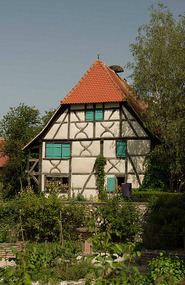
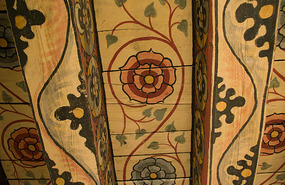
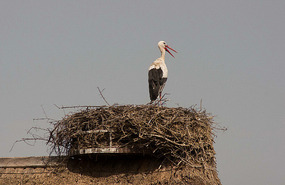
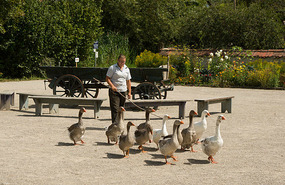
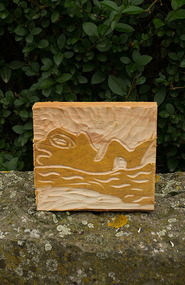

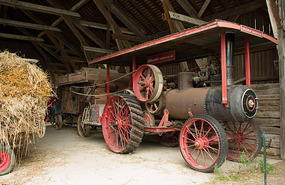










































mom
2012-09-03
Loved the storks-reminded me of the children's book, the Wheel on the School. Also loved the Rue de Chevres. My kind of street.